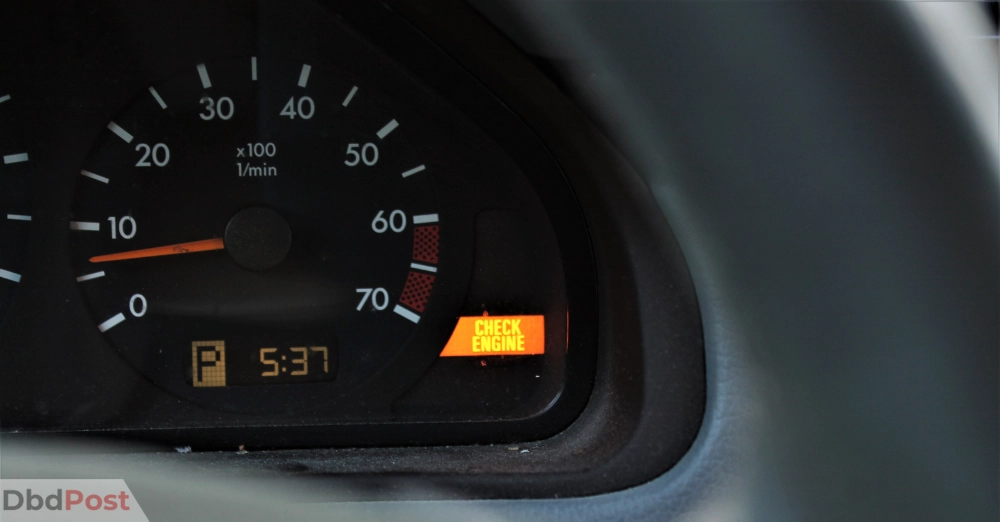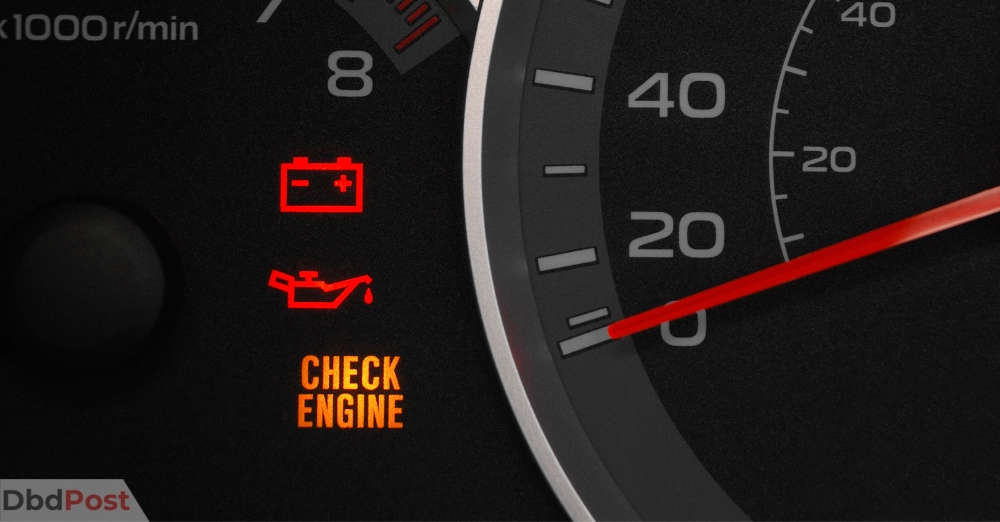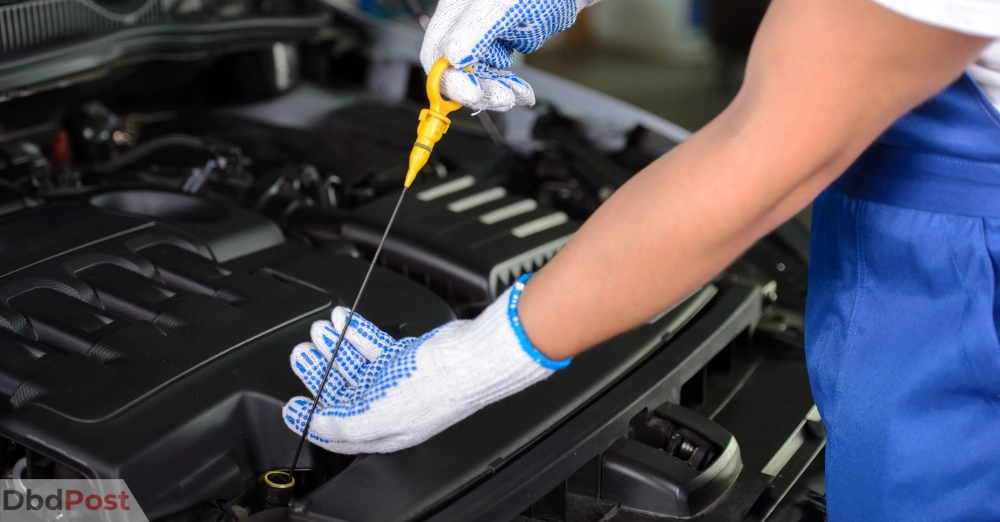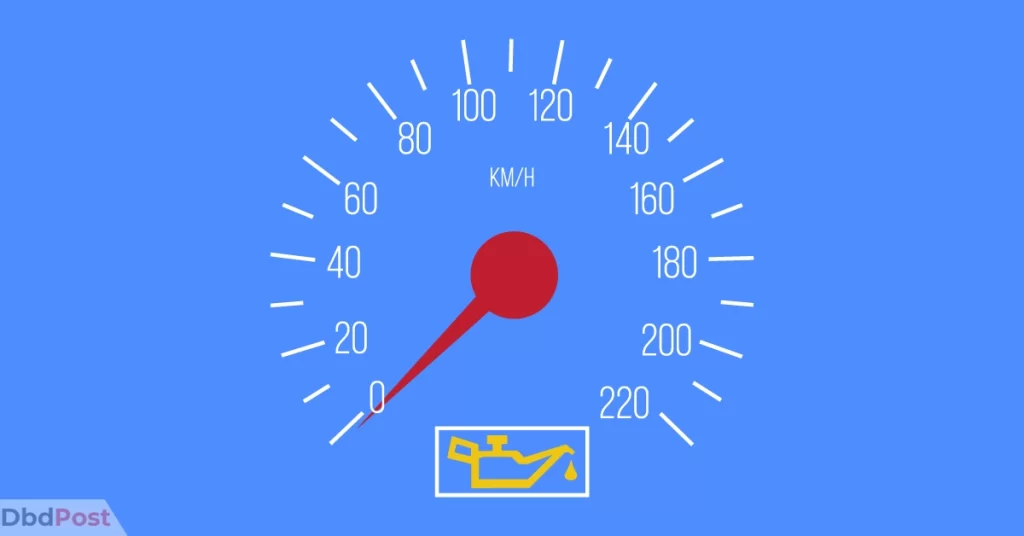The check engine light can be a source of confusion and concern for many drivers. But can low oil cause check engine light to come on?
Keeping your car’s engine clean and running smoothly requires changing the oil. It is a quick fix that shouldn’t take up too much of your time. Some causes of other check engine warning lights include Faulty ignition coils, Loose gas caps, and other factors.
This Dbd guide on whether low oil can cause their check engine light to come on includes all the details on how to check the oil level.
What is a check engine light, and what triggers it?

The check engine light on a car’s dashboard is a warning that something’s wrong with the engine or emissions system. It is also known as a malfunction indicator lamp (MIL).
Furthermore, the check engine light serves a purpose in vehicles. Some of its purposes include:
- Alerting Drivers of Engine or Emissions Issues
- Emphasizing the Importance of Safe Driving
- Facilitating Emissions Testing Compliance
- Enhancing Vehicle Performance and Fuel Efficiency
- Providing Diagnostic Information to Mechanics
Can low oil cause a check engine light to come on?

The check engine light comes on when the oil level is too low. This happens because the engine needs enough oil to work properly. The oil pressure gauge keeps track of the low oil pressure in the engine and sends a signal to the engine control module.
If the oil pressure goes below a specific level, the blinking light comes on.
If you ignore low oil levels, it can cause severe engine damage like overheating or bearing failure. This damage can be permanent, and the repairs can be costly.
To prevent engine problems and avoid the check engine light turning on, regularly check your engine oil level and address any low levels promptly.
Oil plays a crucial role in an engine’s function. Some functions of oil in the engine are:
- Lubricates and cools engine components
- Reduces friction and metal-to-metal contact
- Inhibits rust and corrosion
- Removes impurities and deposits from engine parts
- Acts as a coolant to keep the engine from overheating
- Acts as a gap filler to improve engine efficiency and performance
Without oil, the metal engine components would grind against each other, causing damage and reducing the engine’s lifespan.
Choosing high engine oil quality is important for vehicle maintenance. You can find synthetic oil, synthetic blend, and mineral oil on the market.
How to check your oil levels and what to do if they’re low
Since 1996, all new cars and light-duty trucks sold in the United States must have an On Board Diagnostic (OBD) system. [1]Car And Driver, “Dashboard warning lights explained, https://www.caranddriver.com/features/a35865614/dashboard-warning-lights-explained/” This computer keeps track of emissions levels and other essential engine parts.
Here is a step-by-step guide to checking a vehicle’s oil levels:
Step 1: Prepare your vehicle
Park it on level ground, turn off the engine, put the transmission in Park (or a lower gear), and engage the parking brake. Open the hood. If you’re unsure how to do this, check your owner’s manual.
Step 2: Locate the dipstick
It’s usually easy to find, as it has a colored handle with an oil-can symbol.

Step 3: Pull out the dipstick
Pull it all the way out and wipe off any oil from the end. Look at the tip of the dipstick and find two lines. The lower one means you’re a quart low on oil, and the upper one means you have enough oil.
Step 4: Check the oil level
Insert the dipstick back into the tube and push it all the way down. Pull it out again and look at the tip.
You have enough oil if the oil level is between the two lines. If it’s below the lower line, add a quart.
Step 5: Re-check the oil level
Wait a few minutes after adding oil to let it settle, then recheck the oil level. If it’s between the two lines, you’re good to go. The oil level doesn’t have to be at the upper line to be safe.
If drivers notice low oil levels, they should immediately add oil to the engine to prevent further damage. Running a vehicle with low oil levels can cause the engine to overheat, leading to expensive repairs.
Other reasons why your check engine light may be on
Here are some other reasons why a check engine light may come on:
- Issues with the catalytic converter
- Malfunctioning oxygen sensor
- Loose gas cap
- Problems with the spark plugs
- Faulty ignition coils
- Issues with the mass airflow sensor
- Problems with the fuel system, such as high engine oil consumption
- Faulty oil level sensor or wiring in the emission
- Issues with the transmission, such as low fluid levels or a faulty solenoid
- Electrical problems, such as a faulty alternator or battery
Getting a professional diagnosis to identify the issue and receive proper maintenance is crucial.
Related Stories
- Check this guide to know everything about Nissan Check Engine Light.
- Check this guide on Hyundai Check Engine Light – here.
- Find out everything about Dodge Check Engine Light with our guide.
- If your Volkswagen Check Engine Light is on, check our guide for steps to fix it.
- Find out our guide on how to reset check engine light.
FAQs
What does the check engine light indicate in case of low oil?
A check engine light is the first warning sign that your vehicle needs an oil change. This can happen if the oil is dirty, due to an oil leak, or not enough is flowing through the engine.
Is it safe to drive when the check engine light on?
No, it is not always safe to drive when the check engine light is on. The illuminated check engine light can mean there’s a problem with the engine or emissions system.
How often should I check the engine oil level?
You should check your engine oil level at least once a month or before a long trip. This ensures that your engine has enough oil to lubricate its moving parts and prevents damage.
Can low engine oil cause permanent damage to the engine?
Insufficient engine oil levels can result in irreversible damage to the engine. When there isn’t enough lubrication, the engine’s moving components can rub against each other, leading to wear and tear.
For the engine’s proper functioning, finding out if low oil can cause check engine light to come on is essential.
We hope our comprehensive guide on can low oil pressure trigger the check engine light provides all the necessary information you need.
- 107shares
- Facebook Messenger
About the author
DbdPost Staff is a team of writers and editors working hard to ensure that all information on our site is as accurate, comprehensive, and trustworthy as possible.
Our goal is always to create the most comprehensive resource directly from experts for our readers on any topic.




